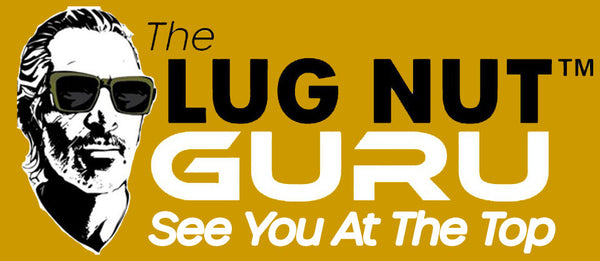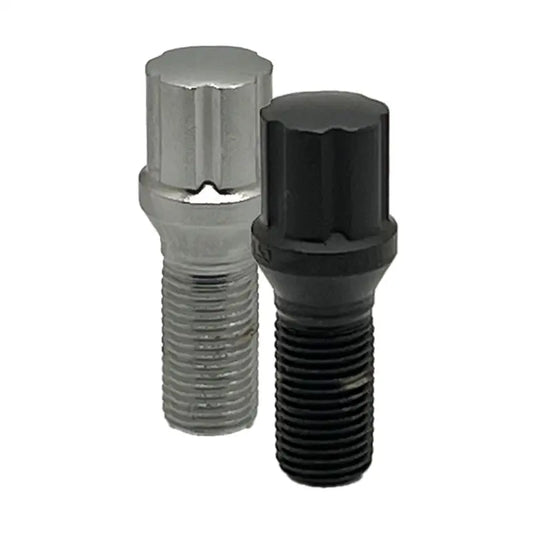The Must-Know Guide to Mag Style Lug Nuts
If you’ve ever come across terms like mag style shank lug nuts or mag shank lug nuts, you might be wondering what they are and how they differ from other lug nuts. Whether you’re working on an older vehicle, restoring classic wheels, or upgrading to retro-style wheels, understanding the purpose and use of mag shank lug nuts is essential. Here’s a quick guide to help you navigate this niche of automotive hardware.
What Are Mag Shank Lug Nuts?
Mag shank lug nuts, often referred to as mag style lug nuts, are specifically designed to be used with wheels that have mag-style lug holes. These types of lug nuts are commonly found on older aluminum wheels, like Cragar or Center Line wheels, as well as newer retro-style wheels.
Unlike tapered or conical seat lug nuts, mag shank lug nuts feature a straight shank that inserts into the pilot hole of the wheel. This design provides a tight and centered fit, which is particularly important for keeping older or specialty wheels secure.
Why Do Wheels Use Mag Shank Lug Nuts?
The straight shank design of mag lug nuts ensures that the wheel remains centered on the vehicle’s hub, offering stability and a secure hold. The shank slides into the pilot hole of the wheel while the flat surface of the lug nut sits flush against the wheel. In most cases, a washer is used between the lug nut and the wheel to protect the wheel’s surface and ensure proper torque distribution.
This style of lug nut is essential for vehicles using certain types of aluminum or retro wheels that lack the more modern conical seat design. For classic car enthusiasts, they are a must-have to ensure proper fit and safety.
Different Sizes of Mag Shank Lug Nuts
There are different sizes of mag shank lug nuts depending on the wheel setup:
- Short Shank: This is typically 0.55 inches (just over 1/2") and is used for specific wheel setups where the pilot hole is shallower.
- Standard Shank: Measuring 0.75 inches (3/4"), the standard shank is more common and fits many aftermarket and retro-style wheels.
- Long Shank (SST): At 1.38 inches, these are used for deeper pilot holes or wheels that require more thread engagement.
Each of these shank lengths is designed to accommodate different wheel hub configurations, ensuring a perfect fit and alignment.
Original Equipment (OE) Applications for Mag Shank Lug Nuts
Many original equipment manufacturers (OEMs) use mag shank lug nuts for their vehicles. For example, certain models of Toyota and Nissan use mag-style lug nuts, typically paired with a washer to maintain torque. These lug nuts may look identical across different makes, but it’s important to note that thread pitch can vary, so always ensure you're using the correct lug nut for your vehicle’s specific needs.
ET Lug Nuts: An Alternative for Custom Wheels
Another variation is the ET Lug Nut, which combines the features of a standard 60-degree conical seat (common in aftermarket wheels) with an extended thread or shank. The extended thread offers additional security and thread engagement, making it a popular choice for custom wheels.
How to Choose the Right Lug Nut for Your Wheel Setup
When selecting lug nuts, it’s crucial to match the type, size, and thread pitch to your specific wheel setup. Using the wrong type of lug nut can lead to improper torque, wheel misalignment, and even damage to your wheels or vehicle.
Final Thoughts
Whether you’re restoring an old classic or upgrading to retro-style wheels, understanding the importance of mag shank lug nuts will ensure that your wheels stay securely in place, providing you with a smooth and safe ride. Be sure to match the right lug nut type with your wheel, and if in doubt, consult with a professional or reach out to suppliers like The Lug Nut Guru™️ who specialize in these products.
If this guide was helpful, share it with your fellow car enthusiasts or visit our store for all your wheel accessory needs. We carry a variety of lug nuts, including mag shank styles, so you can find the perfect fit for your vehicle.

